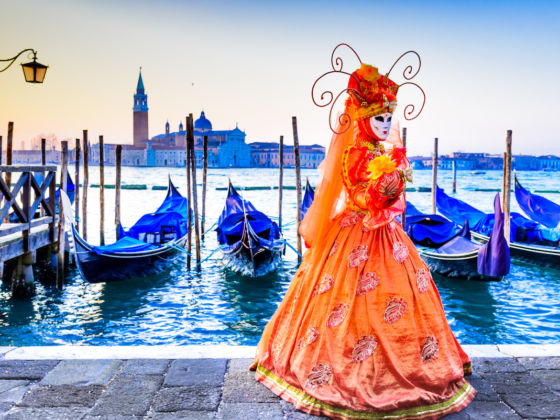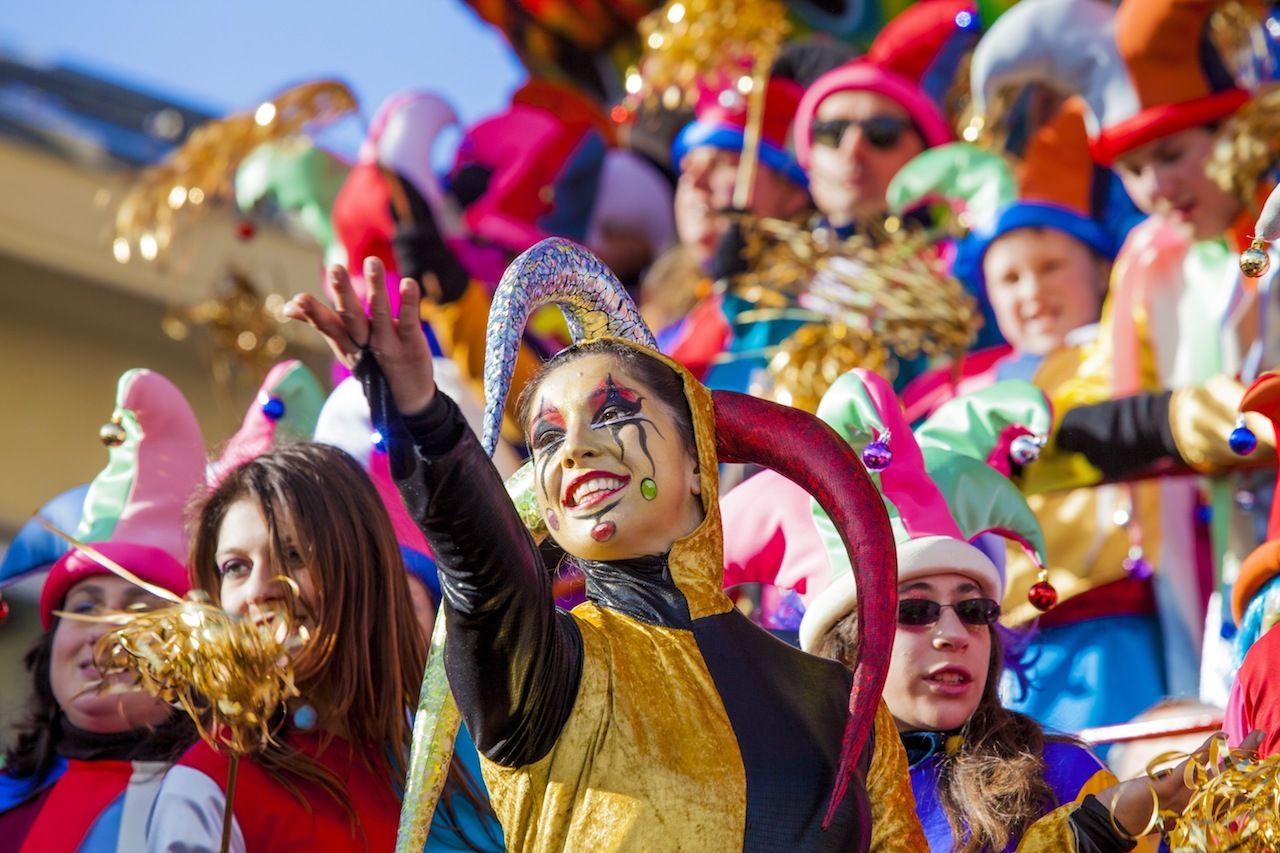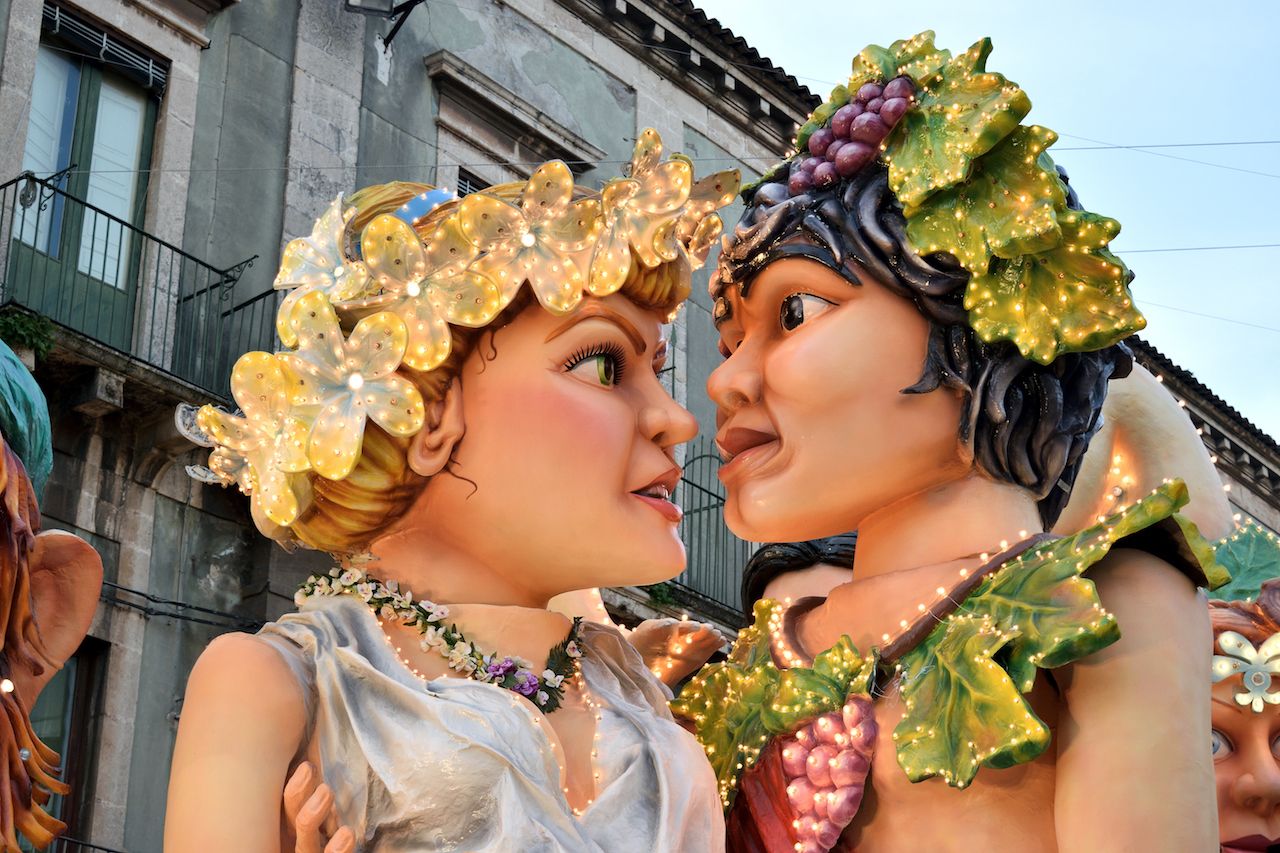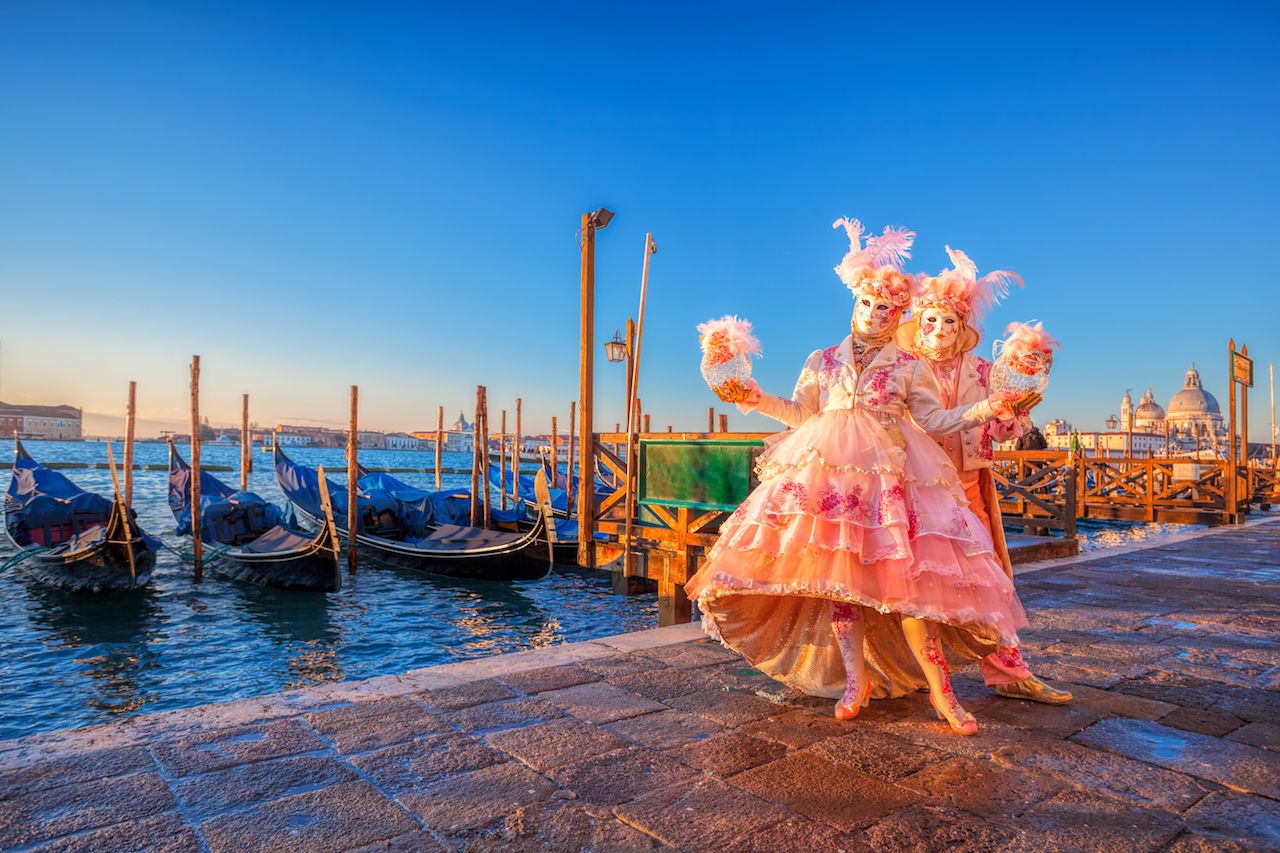For a few weekends in February or March each year, Italy sees deep-fried pastries produced in droves, giant papier-mâché floats parading through towns, and a whole lot of confetti. These are all ways in which Italy celebrates Carnival, or Carnevale in Italian, before the beginning of Lent.
The name derives from the Latin, carnem levare, meaning to eliminate meat. As such, Carnival is the last chance to indulge in food, festivities, and a fair few illicit activities before the period of abstinence and sobriety during Lent. While some traditions like masked gambling in Venice are no longer part of the festivities, several cities around Italy still go all out with their pre-Lent extravagance. Here are some of the best Carnival festivals in Italy, including a fight with oranges, enormous mechanized papier-mâché politicians, and a flying angel.






